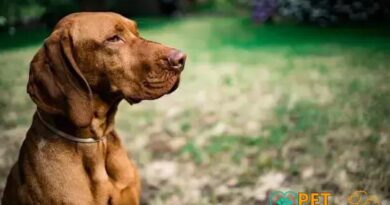What is Gait
What is Gait?
Gait refers to the manner or pattern of movement of the limbs of animals, including dogs. It encompasses the various ways in which a dog walks, trots, runs, or otherwise moves. Understanding a dog’s gait is essential for assessing its health, behavior, and overall well-being. A dog’s gait can reveal a lot about its physical condition, including any potential injuries or underlying health issues.
The Importance of Gait Analysis
Gait analysis is a critical tool used by veterinarians and pet owners alike to monitor a dog’s health. By observing how a dog moves, professionals can identify abnormalities that may indicate pain, discomfort, or other medical conditions. For instance, a limping dog may have an injury, while a change in gait could signal arthritis or hip dysplasia. Regular gait assessments can help catch these issues early, leading to more effective treatment.
Types of Gait in Dogs
Dogs exhibit several types of gait, each characterized by distinct patterns of movement. The most common gaits include walking, trotting, cantering, and galloping. Each gait serves a different purpose and is used in various situations, such as leisurely walks, playful runs, or high-speed chases. Understanding these gaits can enhance a dog’s training and performance in activities like agility or obedience competitions.
Factors Influencing Gait
Several factors can influence a dog’s gait, including age, breed, physical condition, and environmental conditions. Puppies may have a different gait compared to adult dogs due to their developing muscles and coordination. Additionally, certain breeds are predisposed to specific gait patterns, which can affect their performance in various activities. Environmental factors, such as terrain and surface type, can also impact how a dog moves.
Common Gait Abnormalities
Gait abnormalities can manifest in various ways, such as limping, dragging a limb, or exhibiting an uneven stride. These issues can arise from injuries, neurological disorders, or musculoskeletal problems. Identifying and addressing these abnormalities promptly is crucial for preventing further complications and ensuring a dog’s quality of life. Regular veterinary check-ups can help monitor any changes in gait over time.
How to Observe Your Dog’s Gait
To effectively observe your dog’s gait, it’s essential to watch them move in different environments and at various speeds. Take note of their posture, stride length, and any signs of discomfort. Recording videos can also be helpful for later analysis or sharing with a veterinarian. By being attentive to your dog’s movements, you can better understand their health and well-being.
Gait and Training
Understanding your dog’s gait can significantly enhance training efforts. For instance, recognizing when a dog is fatigued or uncomfortable can help prevent overexertion during training sessions. Additionally, tailoring training techniques to accommodate a dog’s natural gait can improve performance and reduce the risk of injury. Positive reinforcement and gradual progression are key to successful training.
Veterinary Assessment of Gait
Veterinarians often perform a comprehensive gait assessment during routine check-ups. This evaluation may include observing the dog in motion, conducting physical examinations, and utilizing diagnostic tools like X-rays or MRI scans if necessary. By thoroughly assessing a dog’s gait, veterinarians can diagnose potential issues and recommend appropriate treatments or interventions.
Maintaining Healthy Gait
To maintain a healthy gait, it’s essential to provide your dog with regular exercise, a balanced diet, and routine veterinary care. Engaging in activities that promote muscle strength and flexibility can also contribute to a dog’s overall mobility. Additionally, being mindful of your dog’s weight can prevent strain on their joints and help maintain their natural gait.




